Related Research Articles
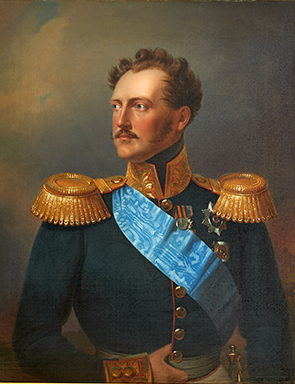
Nicholas I was Emperor of Russia, King of Congress Poland, and Grand Duke of Finland. He was the third son of Paul I and younger brother of his predecessor, Alexander I. Nicholas's reign began with the failed Decembrist revolt. He is mainly remembered in history as a reactionary whose controversial reign was marked by geographical expansion, centralisation of administrative policies, and repression of dissent. Nicholas had a happy marriage that produced a large family; all of their seven children survived childhood.

A pogrom is a violent riot incited with the aim of massacring or expelling an ethnic or religious group, particularly Jews. The term entered the English language from Russian to describe 19th- and 20th-century attacks on Jews in the Russian Empire. Similar attacks against Jews which also occurred at other times and places became known retrospectively as pogroms. Sometimes the word is used to describe publicly sanctioned purgative attacks against non-Jewish groups. The characteristics of a pogrom vary widely, depending on the specific incident, at times leading to, or culminating in, massacres.
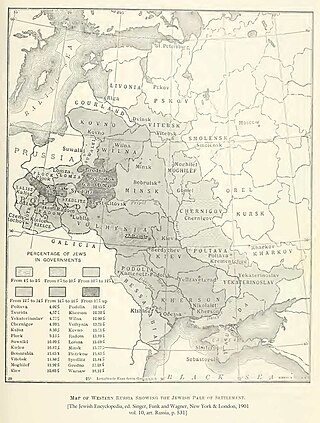
The Pale of Settlement was a western region of the Russian Empire with varying borders that existed from 1791 to 1917 in which permanent residency by Jews was allowed and beyond which Jewish residency, permanent or temporary, was mostly forbidden. Most Jews were still excluded from residency in a number of cities within the Pale as well. A few Jews were allowed to live outside the area, including those with university education, the ennobled, members of the most affluent of the merchant guilds and particular artisans, some military personnel and some services associated with them, including their families, and sometimes their servants. The archaic English term pale is derived from the Latin word palus, a stake, extended to mean the area enclosed by a fence or boundary.

The history of the Jews in the Soviet Union is inextricably linked to much earlier expansionist policies of the Russian Empire conquering and ruling the eastern half of the European continent already before the Bolshevik Revolution of 1917. "For two centuries – wrote Zvi Gitelman – millions of Jews had lived under one entity, the Russian Empire and [its successor state] the USSR. They had now come under the jurisdiction of fifteen states, some of which had never existed and others that had passed out of existence in 1939." Before the revolutions of 1989 which resulted in the end of communist rule in Central and Eastern Europe, a number of these now sovereign countries constituted the component republics of the Soviet Union.

Konstantin Petrovich Pobedonostsev was a Russian jurist and statesman who served as an adviser to three Russian emperors. During the reign of Alexander III of Russia, Pobedonostsev was considered the chief spokesman for reactionary positions and the éminence grise of imperial politics. Between 1880 and 1905, he served as Ober-Procurator of the Most Holy Synod, making him the non-clerical Russian official who supervised the Russian Orthodox Church.

The Khmelnytsky Uprising, also known as the Cossack–Polish War, or the Khmelnytsky insurrection, was a Cossack rebellion that took place between 1648 and 1657 in the eastern territories of the Polish–Lithuanian Commonwealth, which led to the creation of a Cossack Hetmanate in Ukraine. Under the command of hetman Bohdan Khmelnytsky, the Zaporozhian Cossacks, allied with the Crimean Tatars and local Ukrainian peasantry, fought against Polish domination and Commonwealth's forces. The insurgency was accompanied by mass atrocities committed by Cossacks against the civilian population, especially against the Roman Catholic and Ruthenian Uniate clergy and the Jews, as well as savage reprisals by Jeremi Wiśniowiecki, the voivode of the Ruthenian Voivodeship.
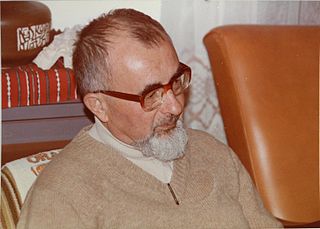
Oswald Rufeisen (1922–1998), religious name Daniel Maria, was a Polish-born Jew who survived the Nazi invasion of his homeland, in the course of which he converted to Christianity, becoming a Catholic and a friar of the Discalced Carmelites. He sought Israeli citizenship under the Israeli Law of Return, but was refused. However, he moved to Israel as a Carmelite friar, where he spent the rest of his life, and acquired citizenship through naturalization.
Names of the Holocaust vary based on context. "The Holocaust" is the name commonly applied in English since the mid-1940s to the systematic extermination of six million Jews by Nazi Germany during World War II.

Paula Hyman was an American social historian who served as the Lucy Moses Professor of Modern Jewish History at Yale University.
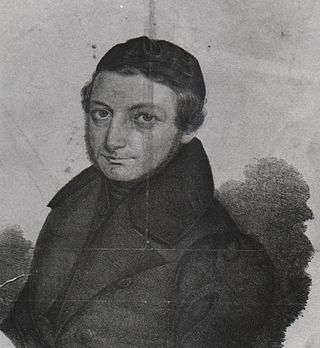
Abraham Kohn was the liberal Chief Rabbi of Lemberg, and was poisoned to death.
Pogroms in the Russian Empire were large-scale, targeted, and repeated anti-Jewish rioting that began in the 19th century. Pogroms began to occur after Imperial Russia, which previously had very few Jews, acquired territories with large Jewish populations from the Polish–Lithuanian Commonwealth and the Ottoman Empire from 1772 to 1815. These territories were designated "the Pale of Settlement" by the Imperial Russian government, within which Jews were reluctantly permitted to live. The Pale of Settlement primarily included the territories of Poland, Ukraine, Belarus, Bessarabia, Lithuania and Crimea. Jews were forbidden from moving to other parts of European Russia, unless they converted from Judaism or obtained a university diploma or first guild merchant status. Migration to the Caucasus, Siberia, the Far East or Central Asia was not restricted.

The Protocols of the Elders of Zion, or The Protocols of the Meetings of the Learned Elders of Zion, is a fabricated text purporting to detail a Jewish plot for global domination. Largely plagiarized from several earlier sources, it was first published in Imperial Russia in 1903, translated into multiple languages, and disseminated internationally in the early part of the 20th century. It played a key part in popularizing belief in an international Jewish conspiracy.
John Doyle Klier was a British-American historian of Russian Jewry and a pivotal figure in academic Jewish studies and East European history in the UK and beyond. At the end of his career and life, Klier was the Sidney and Elizabeth Corob Professor of Modern Jewish History at University College London. He was a historian who challenged scholarly opinion on the Jewish community under the Tsars.
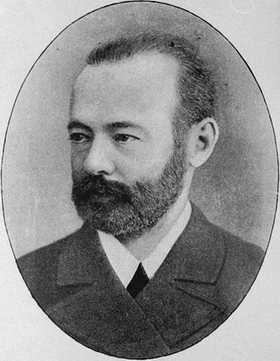
Samuel (Shmuel) Polyakov was a Russian businessman, informally known as the "most famous railroad king" of the Russian Empire, the senior member of the Polyakov business family, a philanthropist and a Jewish civil rights activist, co-founder of World ORT. Polyakov's business interests concentrated in southern Russia and Ukraine. By the time of his sudden death at the age of 50 he was credited with the construction of one quarter of Russia's railroads, his personal net worth was estimated at 31.4 million roubles.
On August 18, 1914, the Russian Empire invaded the Austrian Crownland of Galicia. On August 19, the Imperial Russian Army defeated the Austro-Hungarian Army, advanced 280–300 kilometers into the territory of Austria-Hungary and captured most of eastern Galicia. The principal city, Lemberg fell into Russian hands on September 3. Eastern Galicia had a population of approximately 4.8 million people.
Antisemitism in the Russian Empire included numerous pogroms and the designation of the Pale of Settlement from which Jews were forbidden to migrate into the interior of Russia, unless they converted to the Russian Orthodox state religion.

Max Lilienthal was a German-born adviser for the reform of Jewish schools in Russia and later a rabbi and proponent of Reform Judaism in the United States.

The Invention of the Jewish People is a study of Jewish historiography by Shlomo Sand, Professor of History at Tel Aviv University. It has generated a heated controversy. The book was on the best-seller list in Israel for nineteen weeks.
Crown rabbi was a position in the Russian Empire given to a member of a Jewish community appointed to act as an intermediary between his community and the Imperial government, to perform certain civil duties such as registering births, marriages, and divorces. Because their main job qualification was fluency in Russian, crown rabbis were typically considered agents of the state by members of their own communities, not true rabbis, and they often had no education in or knowledge of Jewish law.

Iakov Aleksandrovich Brafman, commonly known as Jacob Brafman, was a Lithuanian Jew from near Minsk, who became notable for converting first to Lutheranism and then the Russian Orthodox Church. He advanced conspiracy theories against the Qahal and the Talmud. Brafman's works The Local and Universal Jewish Brotherhoods (1868) and The Book of the Kahal (1869) were foundational texts in establishing a theoretical basis for modern antisemitic thought in Russia and established a framework for themes later covered in The Protocols of the Elders of Zion.
References
- ↑ "Faculty Bio: Michael Stanislawski". Columbia University Department of History. Retrieved 2008-01-18.
- ↑ Hyman, P: "Recent Trends in European Jewish Historiography," The Journal of Modern History 77 (2005): 345-356
- ↑ "Past Winners". Jewish Book Council. Retrieved 2020-01-23.